5 Days
4 Nights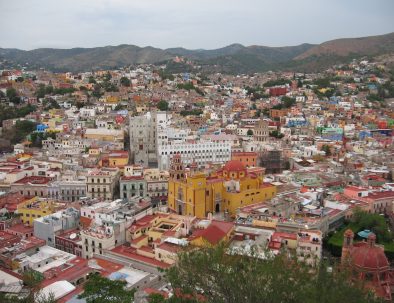
Mexico City is the most densely populated city of the entire country and is located at an altitude of 2250 meters. It is famous for:
• The Aztec Major temple for the 13th century • The Mexican Metropolitan Cathedral of the Spanish conquerors in the Baroque style • The National Palace, in which historical mural paintings by Diego Rivera are exhibited
These places are located around “La Plaza de la Constitución”, the great main square, also known as “Zócalo”.
In Mexico City the political, economic, social and cultural are centralized, and it is the largest transportation distribution center in the country. UNESCO has declared the historic center a world heritage site with the remains of the Aztec capital Tenochtitlan, as well as the water gardens in the Xochimilco district and the university campus of the National Autonomous University of Mexico. Records dating from 1345 indicate that the city was founded under the name of Tenochtitlan. when a group of nomads from the north settled on an island in Lake Texcoco. The Aztecs (actually México) settled there after a few years.
According to tradition, their god Huitzilopochtli had ordered them to found a city where they will find an eagle devouring a snake sitting on a cactus. they found this on an island in the middle of the lake. Eagle, snake and cactus form the central motif of today's Mexican flag. Mexico City has been the seat of the Spanish viceroys since it was founded in 1521, giving it the status of capital.
"El Palacio de Bellas Artes" (Palace of Fine Arts), built between 1904 and 1934, is located on the east side of the "Alameda Central" park. The classic dome structure made of Carrara marble is one of the most famous theaters in the city. Inside, it is decorated according to Art Deco and decorated with bronze jewelry.
The National Anthropological Museum is located in Chapultepec Park and houses the most important collection of Mexico's pre-Columbian heritage. It is one of the most important archaeological collections worldwide.
“El Museo Nacional de Arte” was founded in 1982 and shows exhibits from various museums to provide an overview of Mexican art from the 16th century to the 1950s in one place.
Frida Kahlo's house is in Coyoacán. This colorful building with outer walls in shades of blue was known as la Casa Azul ("Blue House") and was made into a museum. Built in the typical colonial style, the museum houses a special selection of pictures by Frida Kahlo as well as personal items such as her furniture, clothes and books. She lived there with her husband Diego Rivera from 1929 to 1954.
A house very close to Frida Kahlo’s Blue House: this is where Leon Trotsky (1879-1940) lived during his exile, where he was finally murdered in his studio. It is set up as a museum and is often visited together with Frida Kahlo's house.
The Cathedral of Mexico City is the largest and oldest cathedral on the American continent and is the seat of the Catholic Archbishop of Mexico. It is located on the north side of “La Plaza de la Constitución” in Mexico City. The Virgin of the Assumption is the patron saint of the cathedral.
Teotihuacan is located about 50 kilometers northeast of Mexico City. It was a flourishing pre-Columbian city and is considered the royal predecessor of the Aztec Empire. Around 300,000 people lived in Teotihuacan, and their influence extended all over the country, including southern Mexico the Maya region in the Yucatán peninsula and to Guatemala. Teotihuacán is one of the most important archaeological sites in Mexico. In its heyday it had around 75 temples and 600 workshops, it was probably the largest pre-Columbian settlement in America.
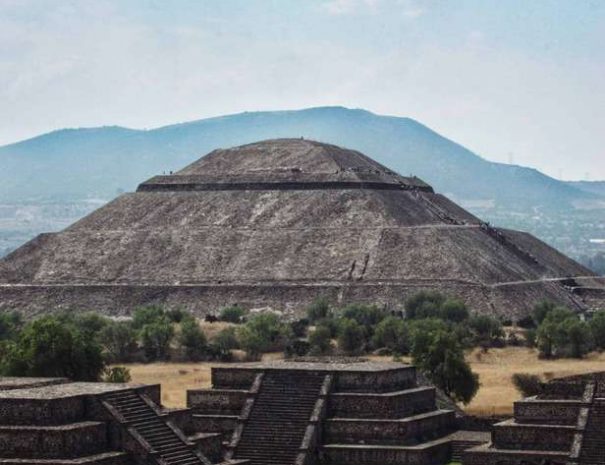
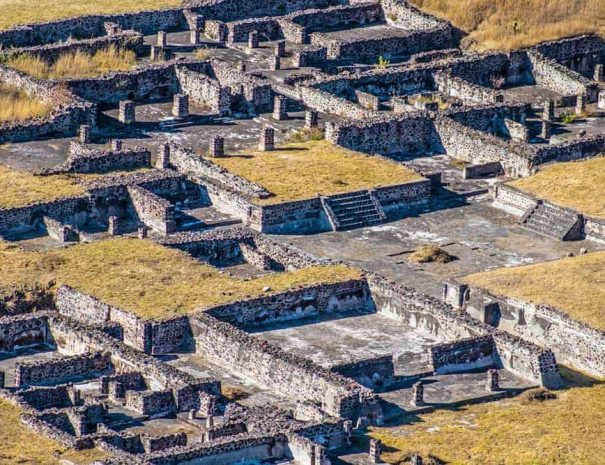
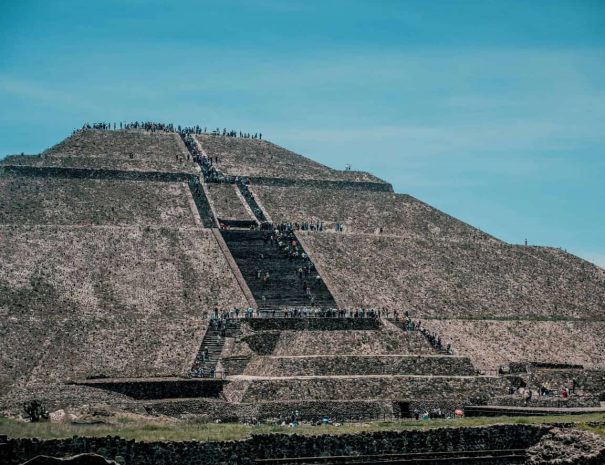
Walk the approximately two kilometers long “Calzada de los Muertos” (Road of the Dead) and feel like a glorious warrior who steps up to meet his gods. Let your gaze wander over pictures of cult sites made of worked stone and brittle volcanic rock that line your path. When you stand in front of the Pyramid of the Sun and the Moon, let the power and energy of a millennia-old civilization flow through your body.
Walk the approximately two kilometers long “Calzada de los Muertos” (Road of the Dead) and feel like a glorious warrior who steps up to meet his gods. Let your gaze wander over pictures of cult sites made of worked stone and brittle volcanic rock that line your path. When you stand in front of the Pyramid of the Sun and the Moon, let the power and energy of a millennia-old civilization flow through your body.
Take a deep breath and climb the 260 steps leading up to the “Pirámide del Sol” (pyramid of the sun). You can stop at any of the five rest areas. When you reach the top, you have the same panoramic view of the landscape as the warriors once had. Open your arms and receive the energy of this mythical monument.
At the end of “La Calzada de los Muertos” (the Road of the Dead), the imposing pyramid of the moon rises to the north. With firm step you climb the 242 steps. At the top of this Pyramid ceremonies were held in honor of the goddess of water Chalchiutlicue. This is an excellent viewpoint from which you can see the entire archaeological site.
Visiting Xochimilco is like finding an oasis in the desert. In the middle of a colossal city is this eclectic place where you can discover colors that your eyes have never seen before. In this village, as you stroll through the aisles of the markets, you will find flowers that shimmer in all rainbow colors. Xochimilco has been a World Heritage Site since 1987.
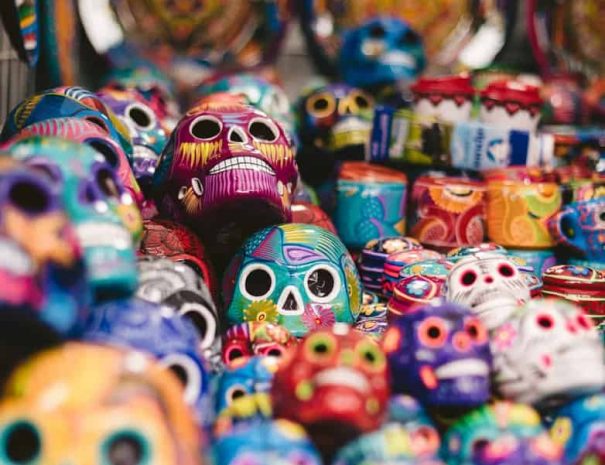
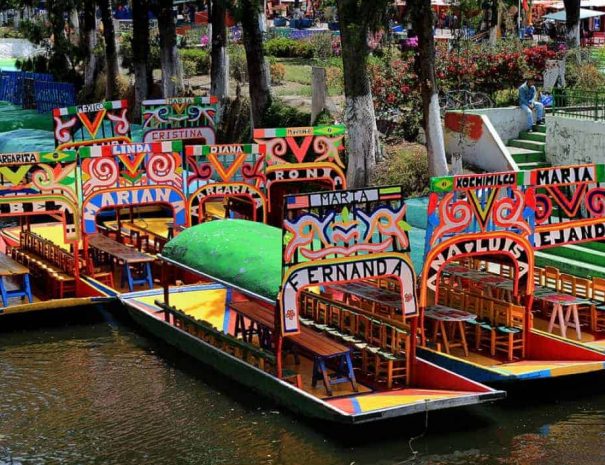
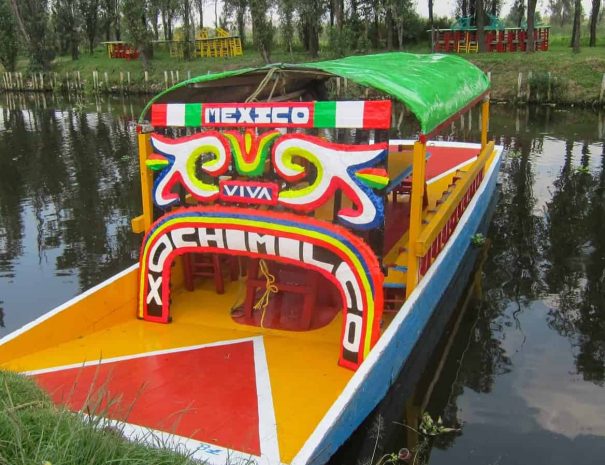
Sail through the fortified canals in the colorful and and shiny Trajineras (Xochimilco boats), the typical pre-Hispanic boats. See the adjoining gardens and avenues to evoke the times when the seaside ambience dominated the Anáhuac landscape. There you will discover some small artificial islands (chinampas) where flowers, vegetables and ornamental plants are grown.
Here you can go on a fascinating excursion while having Mexican snacks and drinks and your trip is accompanied by the music of the Mariachi or the Marimba from Veracruz. In the midst of so much splendor, you will also discover a scary place where you will get goose bumps: “la Isla de las Muñecas”, the doll island. Hundreds of toy dolls are hung in the trees all over the island. They were originally supposed to drive out the ghost of a girl who was said to have drowned near the island. Today, the creepy island is a tourist attraction.
In the colonial era, particularly wealthy cities emerged around Mexico City, which stood out from others and have been preserved to this day with their cobbled streets, their monumental buildings and houses with their typical Spanish style balconies, doors and windows. Some cities like Taxco and Querétaro have emerged from the wealth of silver mining. Others, such as Puebla, Guanajuato, San Miguel de Allende or Mérida, Oaxaca and Morelia, became administrative and commercial centers.

Taxco, about 160 kilometers south of Mexico City, was one of the most important mining cities in New Spain. The rich silver deposits gave the city great prosperity. Hidden between mountain slopes and gorges, Taxco surprisingly appears in the landscape. The squares, neighborhoods and cobbled streets have kept the flair of bygone days. They are protected with special care and were the reason why Taxco was declared a national historical monument.
Among the colonial buildings, the majestic Santa Prisca church stands out, which rises to the east of the main square. It is considered one of the most important examples of Mexican baroque in the 18th century.
The Spratling Museum is also interesting with its collection of pre-Hispanic objects; the Humboldt House, which houses the Viceregal Art Museum, the Silverware Museum and the picturesque market. A visit to a goldsmith is an absolute must: Taxco goldsmiths are widely known for the high quality of their exquisite work.
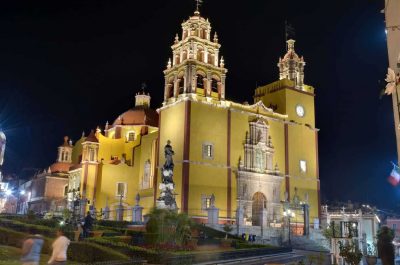
Guanajuato is 432 km from Mexico City in a narrow valley protected by barren mountains. The beautiful and cozy city grew by accident and unplanned. The streets form picturesque corners, such as the famous Kiss Alley (Callejon del Beso), which owes its name to a romantic colonial legend. The silver deposits made it possible to build an opulent city full of impressive buildings, churches and beautiful squares. The bright colors of the facades of many houses give the streets a special charm.
The churrigueresque baroque with its artistic decorations goes well with the Mexican taste. The San Diego and San Cayetano temples from the 18th century are a good example of this. Notable buildings such as the Teatro Juárez, the Alhóndiga de Granaditas, the university and the manor house earl Rul are also significant for the cityscape. Be sure to visit the Presa de la Olla and the Pípila viewpoint. If you like it bizarre, go to the Mummy Museum: more than a hundred mummified bodies are exhibited here – most of them from the 19th century.
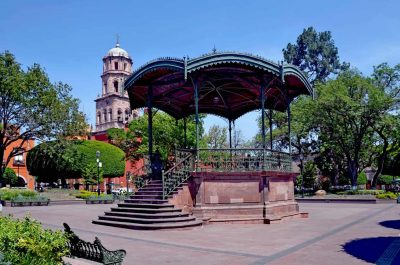
The capital of the state of the same name is a modern metropolis, at first glance one does not suspect that it has a colonial center that is well worth seeing. Silver was the origin of Querétaro's prosperity and in the 18th century led to the engineering and architecture that gave the city its characteristic profile: churches, monasteries and squares built from a smooth pink stone. One of the most admirable structures in America, built in the 18th century, is the imposing aqueduct over a kilometer long with a monumental arcade.
Some buildings are true colonial jewels. The most notable include: the Augustinian Monastery, the Temple and Convent of San Francisco, the Churches of Santo Domingo, the Congregation, Santa Clara and Santa Rosa. Not to forget the building of today’s government palace from the 18th century, the facade of which has wrought-iron railings. Refreshing gardens and public parks such as Alameda Hidalgo and Plaza de la Independencia invite you to rest and ponder the beautiful architecture of the area.
The cuisine in Querétaro has some specialties: soup, tamales, Gorditas de Migajas, Huaraches and Enchiladas from Queretaro. Typical famous sweets are: sweet potatoes with honey, donuts, ham and biznaga.

This colonial city is located 275 km from Mexico City, 91 km from Guanajuato and 60 km from Querétaro. The provincial atmosphere of San Miguel de Allende reflects its old colonial essence. Well-kept, prosperous with splendid viceregal architecture, this city has been added to the list of World Heritage Sites. Its charm and beauty have made it an attractive attraction for visitors.
On the list of particularly worth seeing buildings is the parish of San Miguel de Arcángel from the 17th century, whose neo-Gothic facade from the late 19th century has become a symbol of the city. The houses of Ignacio Allende and the Mayorazgo de la Canal are outstanding buildings of civil architecture.
High-quality handicrafts are on sale here: almost everything from woolen fabrics, paper mache and hand-blown glass to highly interesting ceramics and goldsmith’s work can be found on the markets and in specialist shops.
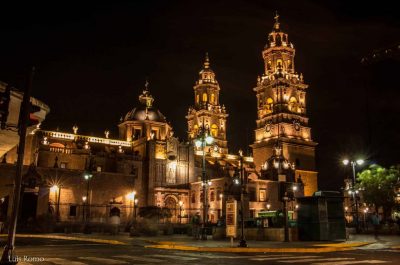
The state and cultural center of the state of Michoacán is a magnificent city with a beautiful colonial center that has been declared a World Heritage Site. The student atmosphere animates the streets and the magnificent colonial buildings give the city character. Visit:
Several museums preserve treasures from the time of the viceroy. Of particular interest are the Museum of Colonial Art, which shows a collection of Christ from corn paste from the 16th and 19th centuries, and the Michoacan Museum , which exhibits archaeological pieces.
On the markets and Tianguis you can find beautiful handicrafts: tablecloths with rufles, embroidered blouses, ceramics, wooden furniture, carved boxes, dolls made from corn husks.
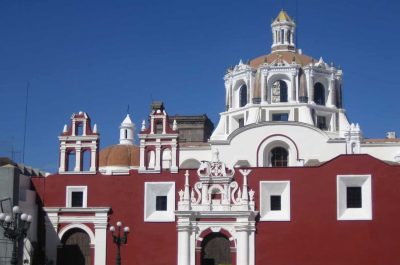
Puebla, 125 km from Mexico City, is a pleasant city with a provincial touch and colonial character. The historically valuable monuments preserved in the center are worth a visit. You can easily drive to Puebla from the capital. Enjoy the landscape of the Cordilleras, in whose relief the hills of the volcanoes Popocatépelt and Iztaccihuatl stand out.
Puebla, founded in 1531, is considered the cradle of Mexican baroque. Typical architectural features are, in addition to the decorative ornate plaster work, also coffered ceilings and wrought iron. The main materials are ceramics, glass and textiles.
The historic center has preserved the original checkerboard pattern that served as a model for so many other colonial cities. According to its own statement, Puebla was the first city in New Spain to be built according to this grid. The rather small town conveys a feel-good atmosphere. There are numerous churches, monasteries, stately palaces and houses in the streets, which are characterized by the charm of their facades made of gray quarry and red brick. They are littered with tiles and adorned with balconies, interiors and richly decorated vaults.
For those interested in museums, the city offers a long list of them: the José Luis Bello Museum, the Casa del Deán de la Plaza Museum, the Museum of Religious Art in the ex-monastery of Santa Monica, the state craft museum in the ex- Santa Rosa Monastery and the regional state museum in the Alfeñique’s house.
The various regional handicrafts can be found in El Parián, an old market from 1796. Here you can mainly see ceramics.
The Mole Poblano is a gastronomic monument, so to speak: it is not an easy dish, but it is unique and Puebla seems to be the best place to be seduced by it.
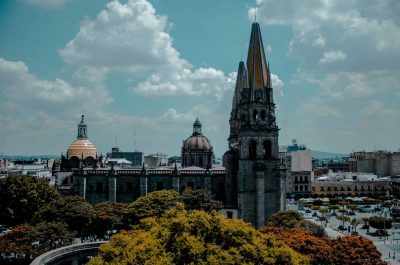
Guadalajara is a city in western Mexico known for tequila and mariachis. The historic center is littered with squares and colonial monuments such as the neoclassical Degollado Theater and a cathedral with two golden bell towers. The government palace houses famous murals by the painter José Clemente Orozco. Guadalajara is the second largest city in Mexico. Tlaquepaque with an old and charming center of handicraft and mariachis.
A day trip to the city of Tequila leads through fields with blue agaves, which are cultivated for Mexico’s popular mezcal. The city of Tequila is the eponym for the famous agave brandy and is an hour away from Guadalajara. A visit is also indispensable for non-drinkers, since tequila and its agave landscape are UNESCO World Heritage Sites.
Almost every shop in town has to do with tequila and sells shot glasses and sets of tequila. However, if you want to get to know the heart of the industry, book a trip with us on the Tequila Express, including a visit to the Jose Cuervo distillery.
This best-selling tequila brand was founded in 1795. It is operated today by the descendants of Don José Antonio de Cuervo, who was founded by King Ferdinand VI in 1758. received permission to make tequila.